Added New Features, ITS and RSUA Launch the Latest Generation of RAISA
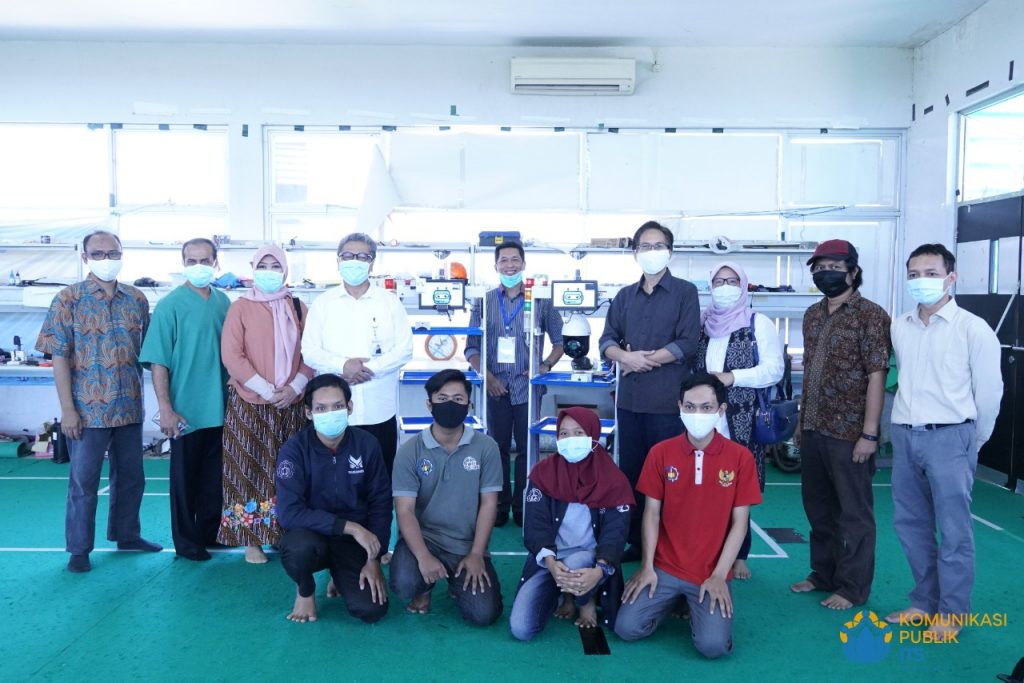
ITS Leaders, RSUA representatives, and the ITS Robot Team after introducing RAISA ICU and RAISA HCU at the ITS Robotics Center Building
ITS Campus, ITS News – Continuing the collaboration in the development of robots to replace medical personnel in handling Covid-19 patients, the Sepuluh Nopember Institute of Technology (ITS), hand-in-hand with the Airlangga University Hospital (RSUA) recently added a new variety of features to two ITS – Airlangga Robot Medical Assistant units (RAISA). The two newest generation RAISA robots were officially introduced at the ITS Robotics Center Building, Friday (8/5).
ITS Rector, Prof. Dr. Ir. Mochamad Ashari, M.Eng., explained that the two robots will respectively work in the Intensive Care Unit (ICU) and High Care Unit (HCU). “These robots have technical characteristics that are suited to the needs of each room,” he revealed.
The ICU room contains patients who are in a passive condition to those who are in an unconscious state. In correspondence to that, the specific RAISA that works in the ICU room will focus on observing and monitoring the patient’s vital condition. Whereas in the HCU room, where patients can still interact with the robot, the specific RAISA stationed in HCU will still have the communication features as before, but with additional features of heart rate sensor, infusion, and oxygen saturation.
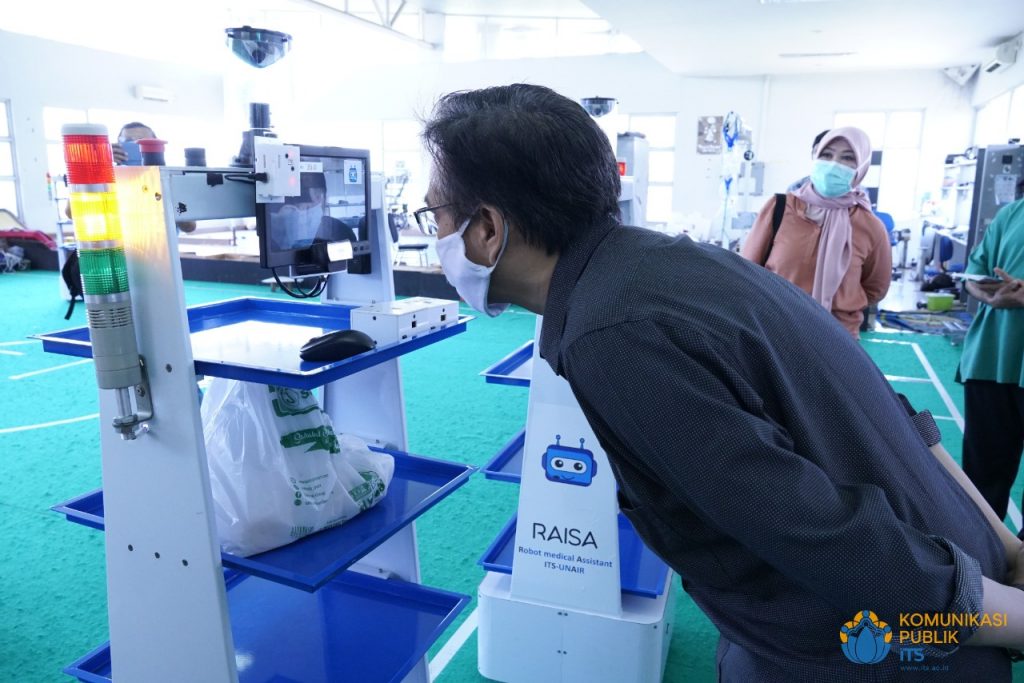
ITS Rector, Prof. Mochamad Ashari, when trying the body temperature sensors of the RAISA HCU robot
A member of the RAISA research team, Rudy Dikairono, S.T., M.T., continued that the previous camera feature of RAISA ICU was replaced with a higher resolution camera to monitor the patient’s condition clearly and accurately. This camera has a Pan-tilt-zoom (PTZ) feature that allows it to rotate 360 degrees, similar to a surveillance camera. “We bought this camera and modified its placement and controls so that it could be connected to the joystick in the operator’s station,” he revealed.
As for the HCU chamber, RAISA added several sensors for temperature and oxygen content. This sensor already uses IoT with a database that will be created on the server, so that each patient has their own data.
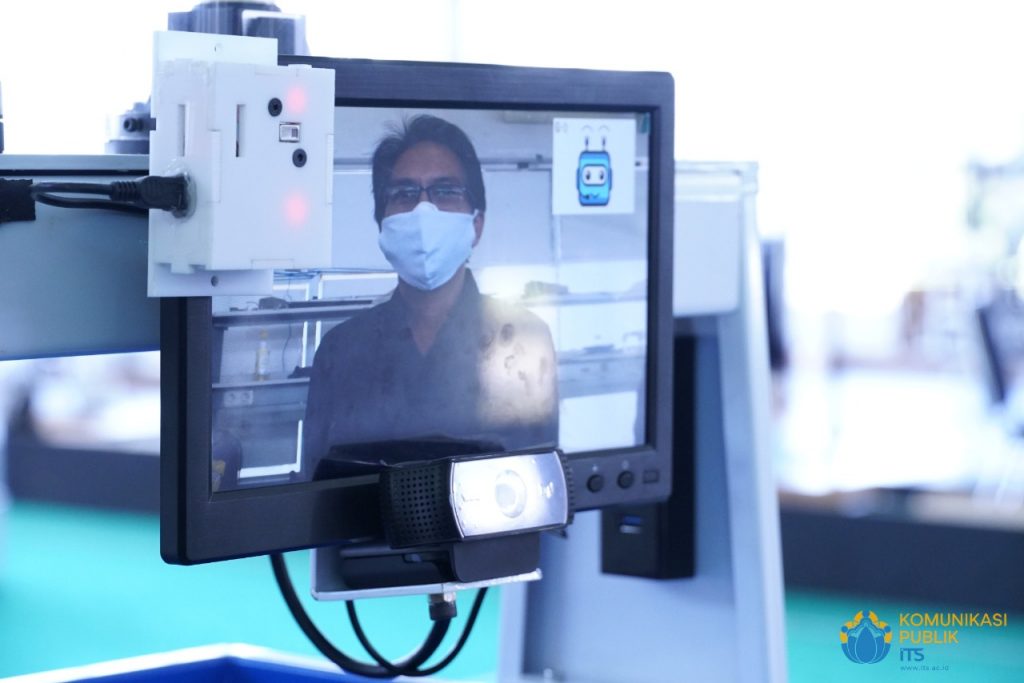
Both RAISA robots also have a proximity sensor that will detect objects that obstruct or block the robot’s path. If there are obstacles, RAISA will give out a sound warning as well as a visual warning on the operator’s monitor screen. “This sensor can detect up to a distance of three meters, but it will halt its course when the obstacle is 50-75 centimeters,” explained this Electrical Engineering lecturer.
In addition, Rudy and his team developed an automatic door that will open the way for RAISA. The isolation room is divided into three rooms, namely the clean room, intermediate room, and infection room. Automatic doors will be installed to connect the space between the intermediate room and the infection room, where the patient is treated. “The door which was originally manual will be modified so that it can be opened through the operator’s room, and has been integrated with robot software,” he added.
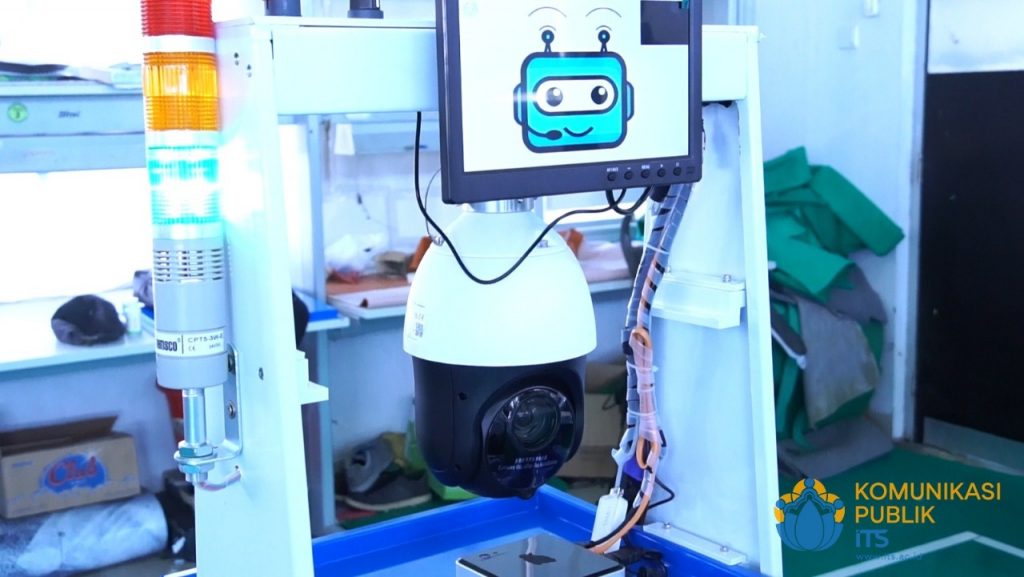
PTZ 360 camera on the RAISA ICU Robot
The robots, which will go through the finalization process with a duration of three to five days, was developed by the ITS Robot Team with Rudy Dikairono, S.T., M.T., as the main coordinator, together with Muhtadin, S.T., M.T., Ahmad Zaini, S.T., M.Sc, Dr. I Ketut Eddy Purnama, S.T., M.T., and assisted by students from the departments of Mechanical Engineering, Engineering Informatics, and Electrical Engineering Automation.
The Director of RSUA, Prof. Dr. Nasronudin SpPD-KPTI FINASIM, stated that these additional features will greatly assist medical personnel in carrying out their duties. “With these features, we can observe heart rate, type of infusion, number of drip drops, urine production, and oxygen saturation, in the ICU room. Meanwhile, in the HCU room, we can also measure the temperature of the patient, in addition to the ability to interact with the patient,” he explained.
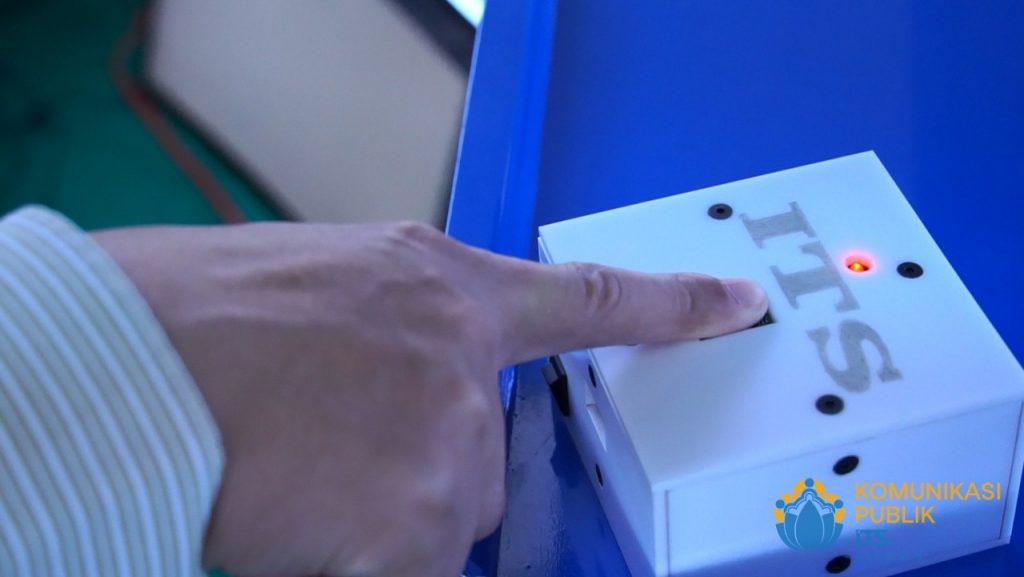
Heartbeat sensor of the RAISA HCU Robot
This doctor, who is familiarly called Nasron, expressed his gratitude for what has been achieved from the collaboration between ITS and RSUA. With the presence of RAISA, the interaction between medical personnel and patients will be reduced directly, thus reducing the risk of the spread and infection of Covid-19. “In addition to helping medical staff in their work, there is also a reduction in the demand and usage of Personal Protective Equipment (PPE) which is limited in number, on top of that, patients can also get more rest to reduce stress and speed up the healing process,” he elaborated.
Moving forward, this doctor who was born in 1956, hoped that the modern technology created by the nation’s children, such as assistant robot for medical staff, will be implemented nationally, and used in various hospitals in Indonesia. “Therefore, we can reduce technology imports from abroad, on top of the safety of our medical personnel in their workplace,” he said. (ri/ory/ITS Public Relations)
Related News
-
ITS Wins 2024 Project Implementation Award for Commitment to Gender Implementation
ITS Campus, ITS News —Not only technology-oriented, Institut Teknologi Sepuluh Nopember (ITS) also show its commitment to support gender
May 08, 2020 18:05 -
ITS Professor Researched the Role of Human Integration in Sustainable Architecture
ITS Campus, ITS News –The developing era has an impact on many aspects of life, including in the field
May 08, 2020 18:05 -
ITS Sends Off Group for Joint Homecoming to 64 Destination Areas
ITS Campus, ITS News — Approaching Eid al-Fitr, the Sepuluh Nopember Institute of Technology (ITS) is once again facilitating academics who want
May 08, 2020 18:05 -
ITS Expert: IHSG Decline Has Significant Impact on Indonesian Economy
ITS Campus, ITS News — The decline in the Composite Stock Price Index (IHSG) by five percent on March 18,
May 08, 2020 18:05
